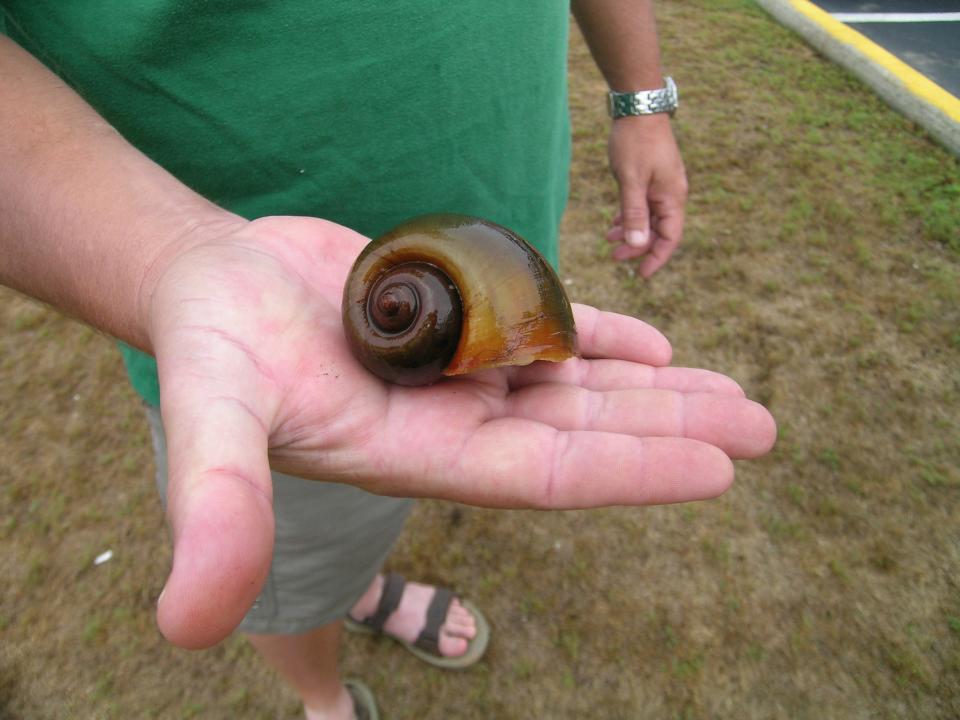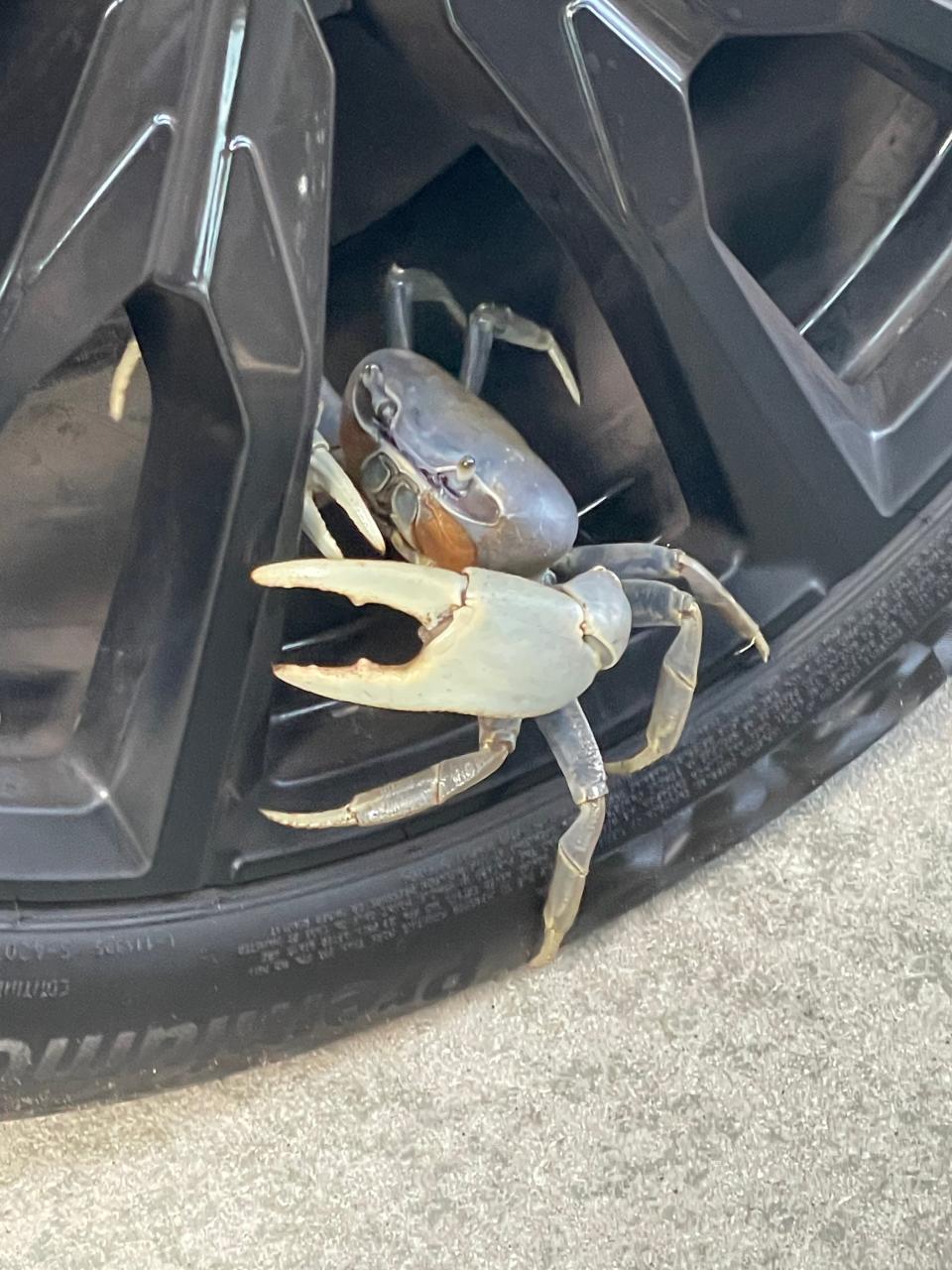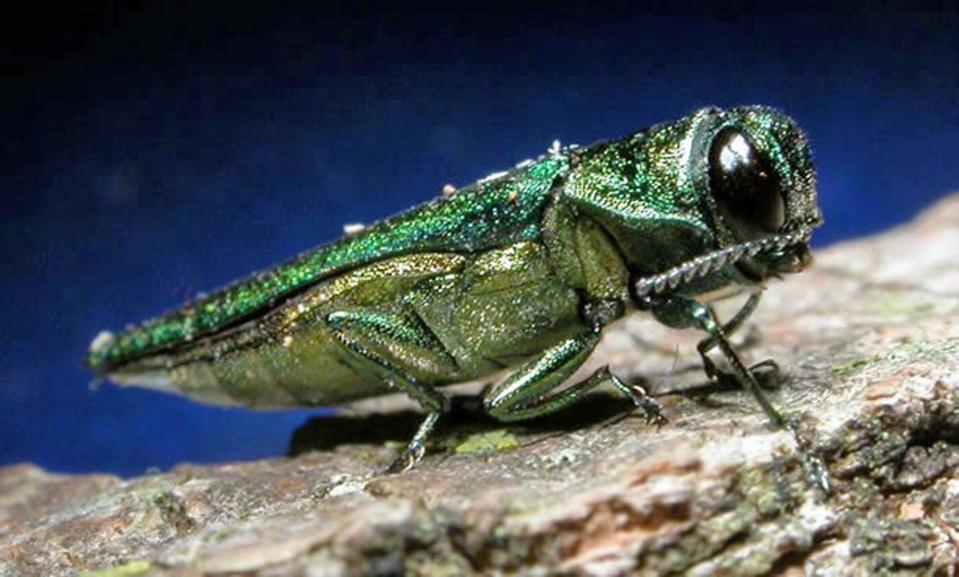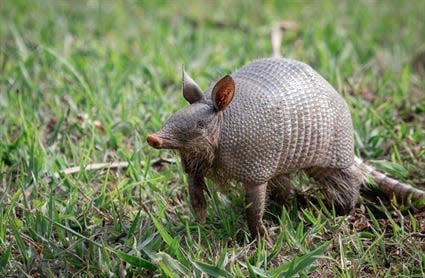From giant crabs to toxic snails, a look at invasive species that made news in NC last year
It might be a new year, but for North Carolina's environment there are many of the same problems from species that shouldn't be here or have been drawn to the Tar Heel State by our warming weather thanks to climate change.
Some might be considered cute, others pests by most. But what they share in common is the real or potential impact they can have on native species that often aren't equipped to deal with the interlopers.
From phragmites to fire ants to kudzu, some of these non-natives have been here long enough that they have become established in our ecosystems and are too widespread and adapted to be wiped out.
But others are just getting their foothold in the Tar Heel State. And while North Carolina isn't usually their first landing spot in the U.S., research and experiences in those other locations offer a vision of what impacts we can expect.
Here's a quick look back at some of the invasives that made news last year, whether as new arrivals or because of their continuing spread across the state.

Toxic snails
In October, the N.C. Wildlife Resources Commission announced that a snail native to South America had been discovered in the Lumber River.
The Apple snail, which can grow to an impressive 6 inches in size, are considered dangerous to both wildlife and humans. Their grazing habits can damage plants that many native aquatic species rely on, and they have also been found grazing on some amphibian eggs, according to the wildlife commission. They also pose threats to humans because of their potential to carry parasites like rat lungworm, which can cause deadly illness in people if the snails are consumed raw or undercooked. Their eggs carry a toxin, too, which can cause skin and eye rashes.
Like some of the most problematic non-native species, the snail also is prodigious breeder. Adult females lay eggs in striking bright pink clusters as frequently as once per week, and, often thousands of individual eggs are found at a time.
The discovery of the invasive species was the first time the snail had been spotted in North Carolina, but officials fear it won't be the last. The Lumber River basin extends into Columbus County and South Carolina, and the snail already has established itself in Louisiana, Georgia, Texas and Florida, according to the U.S. Geological Survey.

Big, like really big crabs!
Imagine a fiddler crab on steriods and you get the idea of the size of the blue land crab.
And like many species that are big, colorful or unusual in some way, the giant crab isn't supposed to be in North Carolina.
But in summer 2023 they were spotted for the first time on Emerald Isle in Carteret County. How they got there remains a mystery.
Blue land crabs are native from Brazil to south Florida, and their bodies can grow as large as 6 inches. Occasional sightings have been reported along Georgia and South Carolina beaches in past decades, but never in North Carolina until last year.
As big as a good-sized coconut or cantaloupe when counting the breadth of its legs and claws, cardisoma guanhumi is hard to miss as it scuttles along coastal areas. That might make you think they are easy to catch. But they are fast, and their burrows are deep and extensive. Oh, and then there's that big claw that it doesn't mind using to defend itself.
Unlike its smaller cousin, the native blue crab, the blue land crab is a vegetarian, grabbing fresh plant shoots, fruits and crops that are found near coastal waters before retreating to its burrow. Although there have been reports of the crabs feeding on animal carcasses and practicing cannibalism, these actions are thought to be rare.
That has researchers not too worried about what direct impacts, aside from creating big holes that could pose a danger to humans and animals, the big crabs might have on the environment. But, they added, there's always the concern of what other bugs or parasites might have hitched a ride up the coast on the crabs and is now impacting local flora and fauna.
PHOTOS: Blue land crabs in North Carolina

Tree-killing bug
There's nothing good to say about this invasive insect that leaves millions of dead ash trees in its wake, and now there's little to stop it from reaching the Wilmington area − if it's not already here.
The emerald ash borer is a strikingly beautiful member of the insect family. Native to Asia, the pest was first spotted in the U.S. near Detroit in 2002. The bug likely hitched a ride over the Pacific in wood-packing material carried by ships or planes.
Jump forward a decade, and the bug was first spotted in North Carolina in Granville County north of Durham. As of last year the invasive insect had been found in 71 of North Carolina's 100 counties, most recently in Craven, Hertford, Cumberland and Lee counties.
And it's still spreading.

The mature beetle, which is about half-inch long, isn't the tree killer, but its larvae is. Adult borers lay their eggs on the bark of ash trees. When the eggs hatch, the larvae bore into the bark and feed on the tree's transportation tissue. What follows is a slow, top-down death for the ash tree, as first the crown of the tree is starved of water and nutrients and then the rest of the tree − a process that can take up to five years.
While the bug can fly, researchers say human transport of infected wood is the primary way the borer spreads. Oh, and just for good measure, the insect also use waterways to travel, since many ash trees are found around rivers and wetlands. Infected trees in Cumberland and Bladen counties were discovered along the banks of the Cape Fear River.
With more than 250 million ash trees in North Carolina, the borer has plenty to eat. Active ways to stop the beetle's spread are few, with researchers around the country − including at N.C. State University − looking into using biological controls from the ash borer's home turf in Asia, including tiny wasps that feed on the bug's larvae.
And while treatment is possible, the process is expensive and has to be done repeatedly to protect the trees.
COMING SOON TO WILMINGTON: Invasive pest that has decimated millions of NC ash trees

Armored possums
If you haven't seen a nine-banded armadillo − yes, an armadillo − in North Carolina, it's likely only a matter of time.
Since 2007, the little mammal has been expanding its range across the Tar Heel State. A bit unusually, the armadillo's invasion began in Western N.C., and it only fairly recently began popping up in the Piedmont and along the Coastal Plain.
While researchers are still gathering information, armadillos don't appear to be causing the widespread ecological problem that other non-native and invasive species can cause when they show up in a new environment. But gardeners and landscapers might disagree, noting that the burrowing animals can leave a mess of holes on lawns and in gardens as they hunt for insects.
Armadillos, a bit like opossums, wouldn't win a beauty pageant in the animal world. They are equipped with long ears, a pig-like snout and a scaly tail. They also has poor eyesight, but a great sense of smell.
But the mostly nocturnal critters are adaptable, which has helped them navigate across North Carolina. Since the first sighting in 2007, the wildlife commission has received nearly 900 reports of nine-banded armadillo sightings in 70 of North Carolina's 100 counties, with nearly 30 counties − stretching from Cherokee to Dare counties − having confirmed observations. Observations, which are increasing year over year, also have been reported in Brunswick, New Hanover and Pender counties.
ON THE MOVE: How climate change and population growth are helping armadillos move into more areas of NC

Reporter Gareth McGrath can be reached at GMcGrath@Gannett.com or @GarethMcGrathSN on X/Twitter. This story was produced with financial support from the Green South Foundation and the Prentice Foundation. The USA TODAY Network maintains full editorial control of the work.
This article originally appeared on Wilmington StarNews: Why giant crabs and toxic snails made news in NC last year

